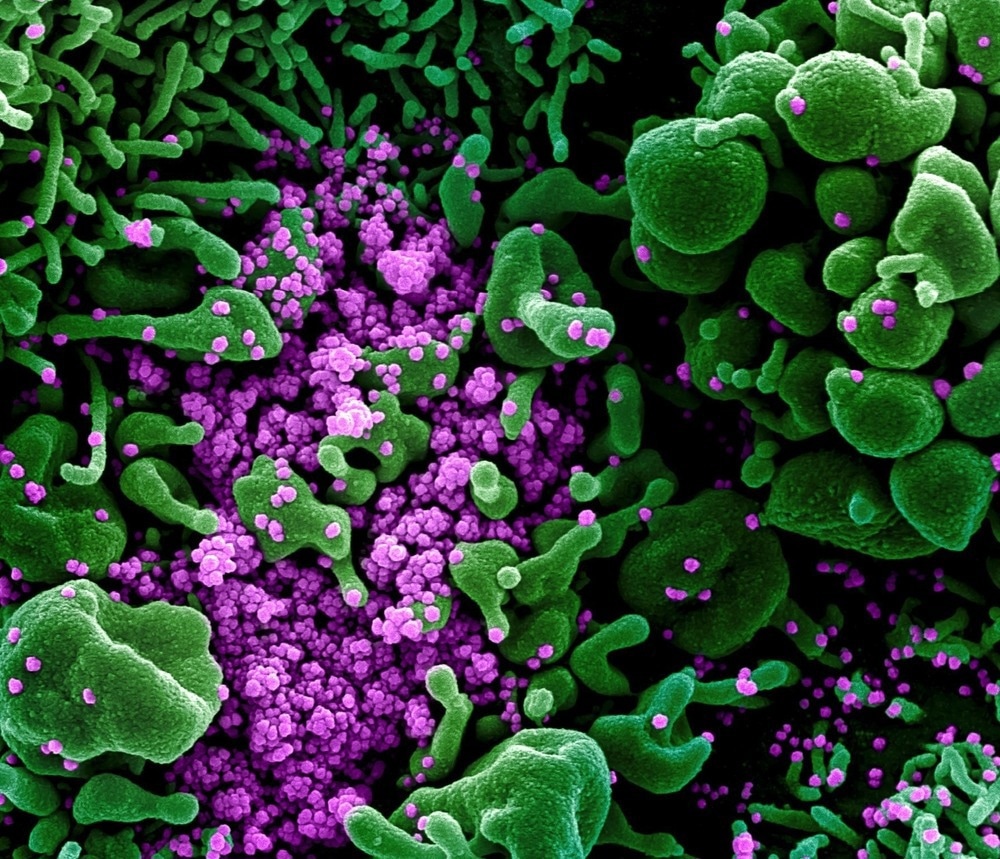BW.1- a new Omicron subvariant that escapes immunity
The severe acute respiratory syndrome coronavirus 2 (SARS-CoV-2), the causal agent of the coronavirus disease 2019 (COVID-19), continues to evolve through genomic mutations. Emerging SARS-CoV-2 variants have been categorized as variants of interest (VOI) and variants of concern (VOC) based on their infectiousness, virulence, and capacity to evade immune responses induced through both natural infection and vaccination.
 Study: SARS-CoV-2 BW.1, a fast-growing Omicron variant from southeast Mexico bearing relevant escape mutations. Image Credit: Ebrahim Lotfi / Shutterstock.com
Study: SARS-CoV-2 BW.1, a fast-growing Omicron variant from southeast Mexico bearing relevant escape mutations. Image Credit: Ebrahim Lotfi / Shutterstock.com
Background
Genetics & Genomics eBook

At present, the SARS-CoV-2 Omicron variant is dominantly circulating in most countries of the world. The continual genomic mutations of the Omicron variant have resulted in the emergence of several subvariants, thus emphasizing the importance of regular genomic surveillance.
A new study published on the Research Square preprint server* reports the presence of mutations that aid in immune escape in the BW.1 (BA.5.6.2.1) strain, which is an Omicron subvariant descending from the BA.5.6.2 lineage.
SARS-CoV-2 BW.1 contains mutations that are similar to the BQ.1 variant and aid in immune escape. BQ.1 is one of the most rapidly transmitting lineages and contains several mutations, such as S:K444T, S:L452R, S:N460K, and S:F486V.
In the current study, the authors suspect that BW.1 could have emerged in Mexico in early July. By October, BW.1 was the dominantly circulating strain in the Yucatan Peninsula.
Mexico is an important Latin American country that has extensively sequenced SARS-CoV-2 genomes. Previous studies have reported that the Yucatan Peninsula is one of the key entry routes of SARS-CoV-2 variants in Mexico due to a significantly large percentage of tourist influx and commercial activities.
About the study
Genomic sequences and the associated metadata of BQ.1, BA.5.6.2, and BW.1 were obtained from GISAID. All relevant genomic sequences including lineage information-based PANGO v.4.1.3 were collected on November 7, 2022.
Genomic alignment and phylogenetic reconstruction analysis of BW.1 and its parental variant BA.5.6.2 were conducted using multiple sequence alignments (MSA) under Nextstrain’s default pipeline. Genomic alignment helped detect mutations of BW.1 and phylogenetic reconstruction enabled tracing back to their origin.
Key findings
Although Mexico is currently undergoing a phase of low COVID-19 incidence after a BA.2/BA.5 driven wave, the genomic analysis of samples collected from Yucatan over the past several weeks exhibited a large prevalence of the BW.1 variant.
Interestingly, researchers observed that in October, the Yucatan Peninsula experienced a surge in COVID-19 cases/ During in this period, the BW.1 variant outcompeted other SARS-CoV-2 variants that were present in the region, including its parental variant.
The genomic analysis strongly indicated that BW.1 could have originated in Mexico during its fifth epidemiological wave and originated from BA.5.6.2 strains that were reported to be circulating in the state of Yucatan during that period. Interestingly, out of the total of 105 BW.1 genomic sequences collected from the GISAID database, 95 were collected in Mexico.
Two synonymous substitutions of BW.1 were traced back to Mexican sequences of BA.5.6.2 genomes. Only two mutations were detected that differentiated Mexican BA.5.6.2 from Omicron strains found in the rest of the world. The nucleotide transition, T7666C, which was present in 2,458 sequences worldwide and 82.48% of all BA.5.6.2 sequences, was absent in Mexican BA.5.6.2 genomes including BW.1.
Analysis of Mexican genomic sequences revealed that BA.5.6.2 and BW.1 sequences shared the synonymous substitution C14599T, which was present in only 4% of BA.5.6.2 sequences across the rest of the world.
The majority of genomic sequences of BW.1 were dissimilar to the parental BA.5.6.2 by two-point mutations. The presence of nucleotide transition G2144A and transversion T22942G were observed in 98.09% and 92.38% of the BW.1 genome, respectively. Notably, the parental BA.5.6.2 group did not contain the T22942G mutation, which was first detected in BW.1 strain sequenced in Mexico in early August.
Although the BW.1 variant descended from Omicron lineage BA.5.6, its genome shares a common evolutionary history with BQ.x variants. This is because both BW.1 and BQ.x descended from the BA.5 lineage.
Both of these subvariants inherited more than 54 mutations, including S:L452R, which is associated with increased infectivity, conferring spike stability, and promoting viral fusogenicity. They also contain the S:F486V mutation, which is associated with reduced efficacy of multiple monoclonal antibodies.
Both BQ.1 and BW.1 variants contain important additional BD mutations, including S:K444T and S:N460K, which enhance viral resistance to bebtelovimab and hinder antibody recognition, thereby enabling immune escape. The presence of the S:N460K mutation enhances fusogenicity and resistance to neutralization.
Conclusions
The authors of the current study emphasized the importance of genomic surveillance and tracking of mutations that could shed light on identifying SARS-CoV-2 strains adversely affecting the global human population. There is a high possibility that the BW.1 strain could increase COVID-19 cases worldwide.
*Important notice
Research Square publishes preliminary scientific reports that are not peer-reviewed and, therefore, should not be regarded as conclusive, guide clinical practice/health-related behavior, or treated as established information.
- Garcia-Lopez, R., Rivera-Gutierrez, X., Rosales-Rivera, M., et al. (2022) SARS-CoV-2 BW.1, a fast-growing Omicron variant from southeast Mexico bearing relevant escape mutations. Research Square. doi:10.21203/rs.3.rs-2285898/v1. https://www.researchsquare.com/article/rs-2285898/v1
Posted in: Genomics | Medical Science News | Medical Research News | Disease/Infection News
Tags: Antibodies, Antibody, Coronavirus, Coronavirus Disease COVID-19, covid-19, Efficacy, Genome, Genomic, immunity, Mutation, Nucleotide, Omicron, Research, Respiratory, SARS, SARS-CoV-2, Severe Acute Respiratory, Severe Acute Respiratory Syndrome, Syndrome

Written by
Dr. Priyom Bose
Priyom holds a Ph.D. in Plant Biology and Biotechnology from the University of Madras, India. She is an active researcher and an experienced science writer. Priyom has also co-authored several original research articles that have been published in reputed peer-reviewed journals. She is also an avid reader and an amateur photographer.
Source: Read Full Article



